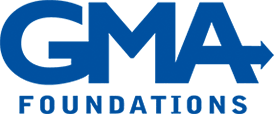
As a trustee or staff of a private foundation, you aim to deploy your resources for maximum impact. But are your internal operations holding you back? If ease and efficiency are elusive or the board is preparing for a significant transition, pause to consider an operations assessment. The process may set your giving program on firmer footing, with closely aligned systems, processes, people, and values.
The Case for an Operations Assessment
The extent of an operations assessment will be driven by your organization’s life cycle stage, size, staffing, and governance. Consider the following indications of a strong operations underpinning. If your experience is falling short, it may be time to pause for adjustments.
1. Evident Values
Your foundation’s operations should reflect its values, which may be explicitly stated or implicit in valued traditions and practices. An assessment will uncover where agreed-on values are evident and where there may be incongruities.
If a foundation values equity but has burdensome grant application steps that discourage smaller organizations, there’s a disconnect. Relying on stated values to assess and inform grantmaking and other processes will help shape operations that closely support the foundation’s mission and goals.
2. Clarity on Roles and Responsibilities
As foundations evolve, responsibilities can blur, board or staff become responsible for things that don’t truly fit their role, skills, or interests. An operations assessment supports the organization’s path to greater clarity, efficiency, personal satisfaction, and stronger relationships.
A foundation that rapidly expanded its staff after a capital event found that outdated workflows and unspecified roles caused confusion. In a consultant-facilitated engagement, they clarified roles, outsourced some tasks, streamlined communication, and improved trust and collaboration among staff, board members, and their nonprofit partners.
3. Intentional and Clear Decision-Making
Decision-making is difficult when authority and processes aren’t clearly defined. Mapping decisions through the organization can pinpoint the causes of delays or inconsistencies. After identifying pain points, an operations assessment team would facilitate consensus and adoption of a streamlined decision-making process – key to greater impact and a more meaningful experience for the board, staff, and nonprofit partners.
4. Technology Alignment and Efficiency
Organizations often juggle outdated or mismatched systems that don’t fully meet their needs. An assessment of your organization’s needs, desires, and constraints would inform a plan to align your systems—from grants management to donor engagement—with your strategy.
Successful plan implementation goes well beyond the technology itself to widespread adoption and integration. Change in the context of an overall operations review is more likely to fulfill its promise.
Why Bring in a Philanthropic Advisor?
A third-party facilitator is positioned to include all relevant staff and board members in a collaborative change process, free of preconceptions, informed by deep experience in philanthropy. A philanthropic advisor offers insights on how other foundations have navigated similar challenges.
It’s difficult to assess inefficiencies and plan for change from within. An inclusive, consensus-driven process, facilitated by an experienced consultant, can identify blind spots, uncover shared priorities, and provide actionable insights.
If your shared values point to greater transparency and increased impact, your operations should reflect that. A facilitated operations assessment is key to freeing you from frustration, agreeing on the path ahead, and achieving your mission.
—–
Contact: Carolyn Rau, GMA’s Director of Operations, to discuss your foundation operations goals, crau@gmafoundations.com
